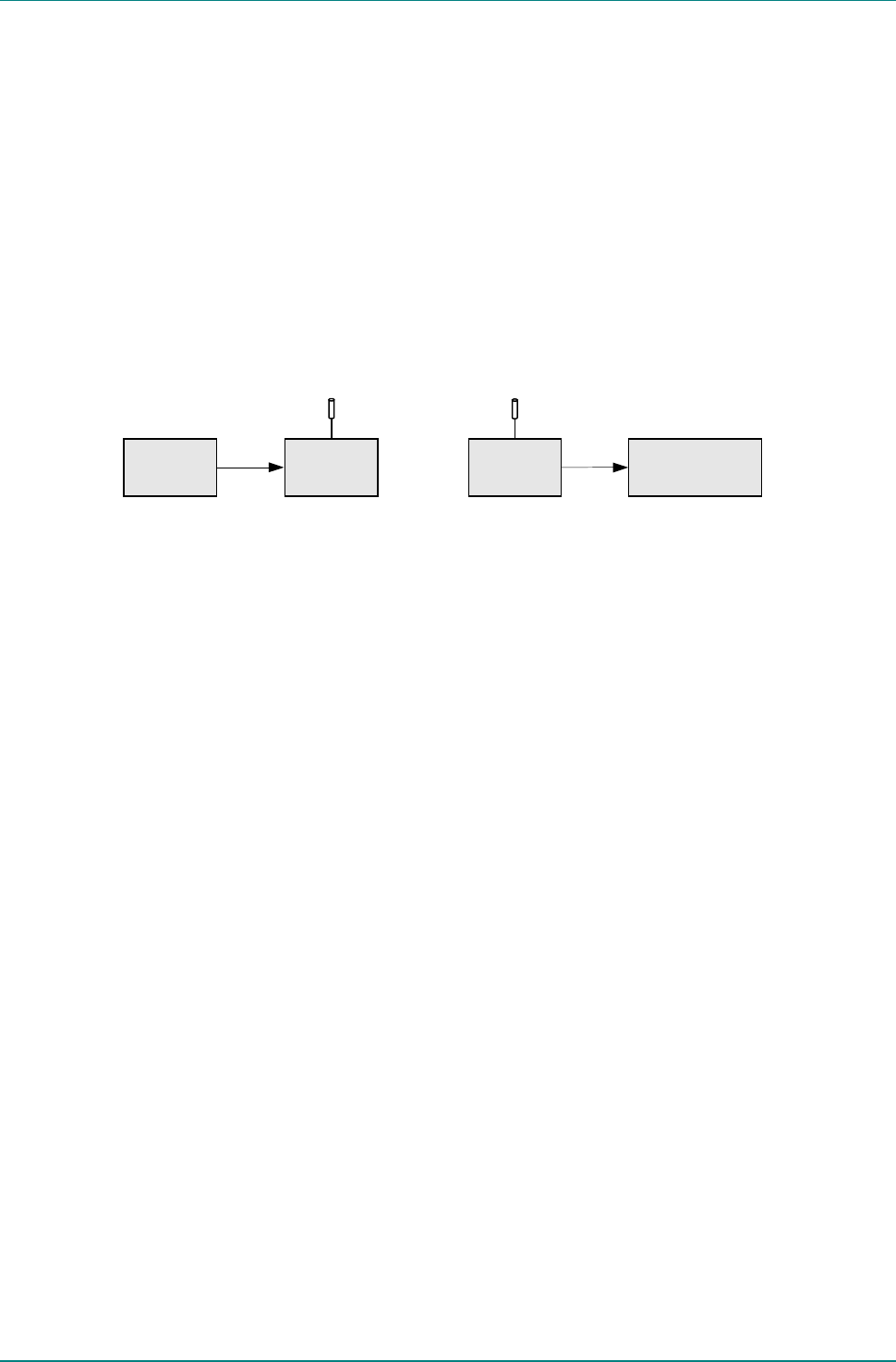
Introduction to the Basic Encoder
Instruction Manual: evolution 5000 E57xx DSNG and DENG Voyager Encoder Page 1-7
ST.TM.E10076.3
E5714
The satellite modulator within the E5714 supports QPSK modulation in
accordance with EN 300 421 (DVB-S). It provides a main and monitoring
IF Output. The IF frequency can be tuned between 50 MHz and 90 MHz.
E5740/E5760
The satellite modulator fitted within the E5740 is capable of QPSK
modulation in accordance with EN 300 421 (DVB-S), and is also capable of
8PSK and 16QAM modulation in accordance with EN 301 210 (DVB-DSNG).
It is available in two variants. One provides an IF output tuneable in the
range 50 MHz to 180 MHz. The other provides an L-band output tuneable
in the range 950 MHz to 1750 MHz.
1.2.3 DENG Systems
E5715/E5750
Encoder
Radio Tx Radio Rx
Rec / Mon
Equipment
70 MHz IF
Figure 1.6: Typical DENG System Configuration
The OFDM modulator fitted in the E5715 and E5750 takes the Encoder’s
output transport stream, and uses Coded Orthogonal Frequency Division
Multiplexing (COFDM) to spread the data over 1705 carriers (2k mode) or
6817 carriers (8k mode). This means that relatively low data rates can be
used on each carrier frequency, and any multipath effects (ghosting) which
occur affects only a small amount of data.
The carriers are closely spaced so that their sidebands overlap, but due to
the orthogonal relationship between carrier frequencies they do not
interfere with each other. This makes the system spectrally efficient.
Noise, multipath effects, co-channel interference and other impairments
can cause some bits to be received in error. Therefore, Forward Error
Correction (FEC) consisting of Reed-Solomon (RS) coding followed by
convolution coding is used to add extra bits to the transmitted signal. This
allows a large number of errors at the receive end to be corrected by
convolutional (Viterbi) decoding followed by RS decoding.
Five convolutional rates are available: ½,
2
/
3
, ¾,
5
/
6
and
7
/
8
. These provide
different compromises between bit-rate and ruggedness.
The modulation scheme used on each carrier can either be QPSK, 16QAM,
or 64QAM. These also provide different compromises between bit-rate and
ruggedness, QPSK being the most rugged.
Four guard intervals are available
1
/
32
,
1
/
16
,
1
/
8
, and ¼. These are used to
reduce the effects of intersymbol interference at the receive end caused by
multipath propagation.
The output of the modulator is 70 MHz IF for connection to a suitable radio
transmitter.


















